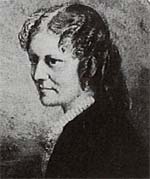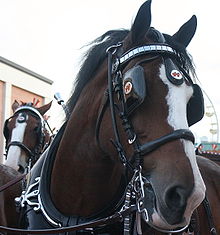Black Beauty

Black Beauty Novel Cover
Publisher, F.M. Lupton Publishing Company, Publication date 24 November 1877
Black Beauty

Author, Black Beauty, Anna Sewell
Black Beauty was written by  Anna Sewell an English writer. This novel was written in the later years of Sewell's life. At the time of writing she was confined to her home because of her declining health. Sewell's only published work was Black Beauty, written during 1871 to 1877, after she had moved to Old Catton, a village outside the city of Norwich in Norfolk. It is also important to note that Black Beauty is one of the best selling books of all time. The book's sales broke publishing records, it is said to be "The sixth best seller in the English language." It has sold more than 50,000,000 copies world-wide Sewell died of hepatitis or phthisis on 25 April 1878, five months after her book was published, living long enough to see the book's initial success. She was buried on 30 April 1878 in the Quaker burial-ground at Lammas near Buxton, Norfolk, not far from Norwich, where a wall plaque now marks her resting place. Anna Sewell an English writer. This novel was written in the later years of Sewell's life. At the time of writing she was confined to her home because of her declining health. Sewell's only published work was Black Beauty, written during 1871 to 1877, after she had moved to Old Catton, a village outside the city of Norwich in Norfolk. It is also important to note that Black Beauty is one of the best selling books of all time. The book's sales broke publishing records, it is said to be "The sixth best seller in the English language." It has sold more than 50,000,000 copies world-wide Sewell died of hepatitis or phthisis on 25 April 1878, five months after her book was published, living long enough to see the book's initial success. She was buried on 30 April 1878 in the Quaker burial-ground at Lammas near Buxton, Norfolk, not far from Norwich, where a wall plaque now marks her resting place.
Sewell did not write the novel for children although now Black Beauty is considered a classic children's book. She said that her purpose in writing the novel was "to induce kindness, sympathy, and an understanding treatment of horses" an influence she attributed to an essay on animals she read earlier by Horace Bushnell (1802-1876) entitled "Essay on Animals." Her sympathetic portrayal of the plight of working animals led to a vast outpouring of concern for animal welfare and is said to have been instrumental in abolishing the cruel practice of using the checkrein (or "bearing rein," a strap used to keep horses' heads high, fashionable in Victorian England but painful and damaging to a horse's neck). Black Beauty also contains two pages about the use of blinders (calling them blinkers) on horses, concluding that this use is likely to cause accidents at night due to interference with "the full use of" a horse's ability to "see much better in the dark than men can..."

Blinkers
Note: Blinders, blinkers or winkers: Blinders, also known as blinkers or winkers, are a piece of horse tack that restrict the horse's vision to the rear and, in some cases, to the side. They usually are made of leather or plastic cups that are placed on either side of the eyes, either attached to a bridle or to an independent hood. Blinkers that have a peep hole cut in the back of the cup are known as visors. Many racehorse trainers believe these keep the horse focused on what is in front of him, encouraging him to pay attention to the race rather than other distractions, such as crowds. Additionally, blinkers (then usually known as winkers) are commonly seen on driving horses, to keep them from being distracted or spooked, especially on crowded city streets. A "set of winkers" can refer to the whole bridle, particularly the heavy bridle used on draft horses.
Most equestrian disciplines, other than racing and harness competition, do not permit the use of blinders at any time, under penalty of elimination. In racing, blinkers are usually seen attached to a synthetic hood placed under the bridle. In driving, they are attached to the bridle's cheek pieces. A variation, called "winkers" are seen in Australian Thoroughbred horse racing. These are fleece rolls that are placed around the bridle cheek straps. They do not restrict the horse's view as much as blinkers do. Also used in Australian racing are "pacifiers," which are a blinker style hood with mesh eye-covers, thought by some to calm horses. They may be banned from use on wet days as they may clog up with mud.
A blinder is also a bag or cloth blindfold put over the head of a difficult horse while it is being handled, loaded into starting gates or mounted. The term, in both "blinker" and "blinder" form is also used metaphorically to refer to people with an overly narrow focus or inability to see the larger picture.
The book describes conditions among London horse-drawn taxicab drivers, including the financial hardship caused to them by high licence fees and low legally-fixed fares. A page footnote in some editions says that soon after the book was published, the difference between 6-day taxicab licences (not allowed to trade on Sundays) and 7-day taxicab licences (allowed to trade on Sundays) was abolished and the taxicab licence fee was much reduced...
Horses in Black Beauty novel:
- Darkie/Black Beauty/Black Auster/Jack - The narrator of the story, a handsome black horse. He begins his career as a carriage horse for wealthy people but when he "breaks his knees" (i.e., develops scars on his "knees" after a bad fall). Black Beauty is no longer considered presentable enough and is put to much harder work. He passes through the hands of a series of owners, some cruel and some kind. Black Beauty always tries his best to serve humans despite the circumstance.
- Duchess (Nicknamed "Pet") - Beauty's mother, who encourages Beauty to be good from a young age.
- Rob Roy - A fellow black horse from Beauty's original farm who is killed in a hunting incident. It is later learned that he was Beauty's half-brother, an older son of Duchess.
- Lizzie - A high strung, nervous mare who Lady Anne rides. One day Lizzie becomes spooked. Black Beauty and Beauty's rider come to the aid of Lizzie's rider.
- Ginger - Named for her chestnut color and her habit of biting, which is often how the spice, ginger, is described. Ginger is a more aggressive horse due to her traumatic upbringing.
- Merrylegs - A short, white, handsome pony who is polite to humans and horses alike. He is ridden by the young daughters at Birtwick Park. Then later on Merrylegs was sent to live with a vicar who promises never to sell him.
- Sir Oliver - An older horse who had his tail docked to his great annoyance and discomfort.
- Rory - A job horse usually paired with Black Beauty. Became a coal carting horse after getting hit in the chest by a runaway cart.
- Peggy - A hired horse who cannot run very fast due to her short legs.
- Captain - A former army horse who witnessed horrific incidents in the Crimean War, although he was well treated and received no wounds. He lost his beloved master in the Charge of the Light Brigade. He became a cab horse for Jerry, where he works with Black Beauty.
- Hotspur - A five year old horse bought to replace Captain.
- Justice - A calm, peaceable horse Beauty meets at Birtwick Park.
Characters in the Black Beauty novel:
- Farmer Grey - Beauty's first owner, a good kind man who trains him well.
- Mr. Douglas Gordon(Squire Gordon) - A very kind and loving master who was also the squire.
- Mr. Barry - A man who tries to treat horses well, but lacks knowledge on horse care.
- Mr. Jeremiah Barker - A kind owner who uses Beauty as a cab horse. Owns Captain and Hotspur.
- Mr. Jakes - An owner who uses Beauty as a work horse, forcing him to carry heavy loads.
- Mr. Nicholas Skinner - A ruthless cab horse owner who wears out horses through hard work and mistreatment.
- Farmer Thoroughgood - A kind owner who cares for Black Beauty when he is at his weakest.
- The three ladies - His final home where he spends the rest of his days very well treated.
I read this book to my daughter when she was around 6 years of age. We talked about kindness and caring.
|